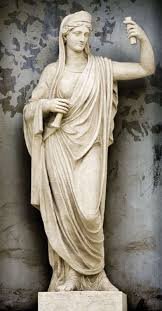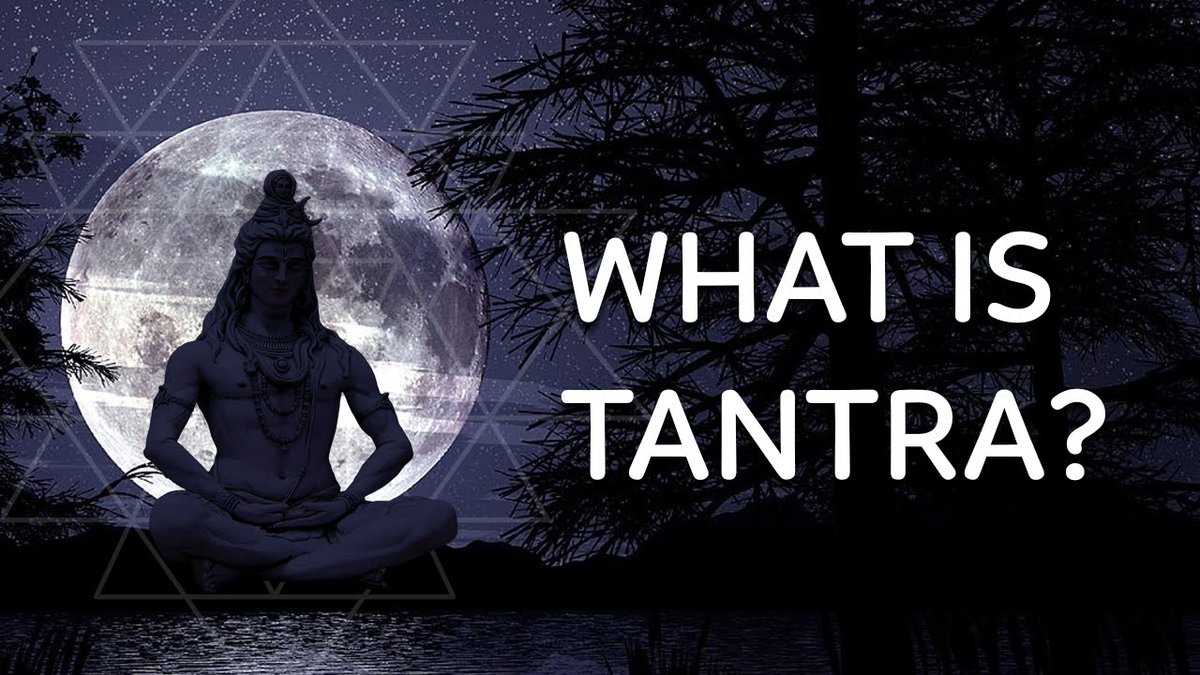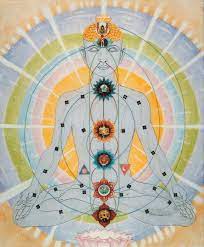Of course, almost all ancient civilizations tended to worship female deities as well as male ones, from the ancient civilizations of India, Egypt, Mesopotamia, the Near East, Greece, Rome, China, Japan, and many others...
#Spirituality
#Devi
#Spirituality
#Devi
in which female deities were linked to the fertility of crops, the sovereignty of kingship, the protection of urban ceremonial centers, the waging of warfare, and many other vital functions.
#Spirituality
#Devi
#Spirituality
#Devi

The civilization that developed the most elaborate Goddess worship of any on Earth was India. Goddess idols have been found in the Indus Valley civilization from at least as early as 2500 B.C.E., and imagery of the Yoni of Shakti.
#Spirituality
#Devi
#Spirituality
#Devi

Scores of ancient Goddess pilgrimage sites called Shakti Peeths exisr all across South Asia. Female deities are a major focus in ancient Indian literature, from Vedas to Smritis. Goddess worship is a huge part of Tantra & Tibetan Buddhism, flourishing heavily in eastern India. 

At the village level throughout India, Tibet, and Sri Lanka there has been a long, relatively unbroken continuity of Goddess worship extending back to Neolithic times.
#Spirituality
#Devi
#Spirituality
#Devi

Local village goddesses were (and still are) invoked to increase human fertility (evidently to spectacular effect, if Indian population rates are any indication), to cure diseases, to bring about good fortune, to enhance the productivity of crops, and to destroy demons. 

Many Rajas extended royal patronage to the worship of various Goddesses like Saraswati, Lakshmi, Parvati, Kali, Chandi, Durga, Shitala, and hundreds more.
#Spirituality
#Devi
#Spirituality
#Devi

The Vajrayana tradition of Tantrik Buddhism in the ancient civilizations of Tibet, China, Mongolia, and Japan, directly derived from Tantrik Hinduism, is widely associated with Goddess worship, with hundreds of female manifestations of the Divine power.
#Spirituality
#Devi
#Spirituality
#Devi

Most famous (and still widely worshipped today) are the Goddess Tara, the universal protectress, and the Chinese/Japanese Guanyin, Goddess of Mercy and Salvation.
#Spirituality
#Devi
#Spirituality
#Devi

Ancient Japanese civilization had well-established traditions of Goddess worship, even before the arrival of Buddhism, in the native Shinto tradition,
#Spirituality
#Devi
#Spirituality
#Devi

where many female nature deities are propitiated, such as the Divine Creator Goddess Izanami, the Sun Goddess Amaterasu (supreme national guardian deity of Japan and Divine ancestor of the royal family), and many more. 

prominent in ancient Egyptian civilization: Nut, Goddess of the Sky; Neith, patroness of victorious weapons and the art of weaving; Isis, benevolent Goddess of Wisdom and the Harvest; and Hathor, another Sky Goddess who assumed various forms.
#Spirituality
#Devi
#Spirituality
#Devi

Some of these Goddesses were deeply entwined, in the development and continuity of Divine kingship. The pharaohs claimed to be the sons of Isis.
#Spirituality
#Devi
#Spirituality
#Devi

The ancient Mesopotamian (Sumerian, Akkadian, etc.) and Semitic civilizations worshipped the Goddess Inanna, Queen of Heaven and Earth and the Goddess of Love, War, Sex, Power, and Fertility, as well as many other Goddesses of ancient Sumer.
#Spirituality
#Devi

#Spirituality
#Devi


Inanna was profoundly involved in the rise of Sumerian state-level social organization, and was connected to the fertility of crops, the patterns of social organization, and the development of urban centers.
#Spirituality
#Devi
#Spirituality
#Devi

Texts were written on cuneiform clay tablets describing Goddess' sexual desires, history of her family tree, her power as Sumer's Queen & her responsibilities for resources & fertility of Earth & victory in war. In Sumerian civilization she was never subordinate to a male deity. 

Inanna has been identified with the Goddesses Ishtar and Astarte, worshipped in ancient Semitic civilizations. The ancient Canaanite and Hebrew civilizations worshipped the Goddesses Asherah and Anat (a wrathful warlike deity) as well. 



Even King Solomon praised the pillars representing the Goddess Asherah, and his son Rehoboam erected an image of her in the temple at Jerusalem. This was before the establishment of patriarchal monotheism in Judaism.
#Spirituality
#Devi
#Spirituality
#Devi

The ancient pre-Islamic Arabian civilization worshipped hundreds of Goddesses, like the Mother Goddess Al-Lat.
#Spirituality
#Devi
#Spirituality
#Devi

Ancient Greek civilization worshiped many goddesses: Gaia the Earth-Mother, Hera, Demeter, Athena, Artemis, Aphrodite, Hestia, Persephone, Hekate, etc., each with distinct roles & spheres of influence. 

Most Greek Goddesses had counterparts in ancient Roman civilization as well, along with Anatolian Goddesses like Cybele the Magna Mater. 

Ancient Celtic civilization worshipped many female deities. For example the shape-shifting raven/crow Goddess Morrigan, the Phantom Queen who presided over war, fate, and death as patroness of revenge, magic, and witches, and ruler of rivers, lakes, and other freshwater bodies; 

or bright Aine, Goddess of love, growth, cattle, light & Midsummer’s Eve; or Great Mother Goddess Danu. Likewise with ancient Norse civilization, with major Goddesses like Frigg & Freya, völvae magic-workers upon the web of fate, shapeshifters & generally highly powerful beings. 

Ancient North American civilizations also tended to worship female deities, quite extensively, often as Mistress of Animals (like Deer Woman, White Buffalo Calf Woman, etc.), or Earth Mother Goddesses linked to the cultivation of corn, beans, squash, gourds, and other crops; 

as well as the important Spider Goddess of the Navajo and other ancient peoples of the Arizona region, helper and benefactor of humankind, patron of weaving and farming, protector of the innocent and the balance of nature. 

Goddess worship played an important role in ancient Toltec, Aztec, Maya & Inca civilizations; these traditions continue to thrive in descendant Mesoamerican populations today, such as worship of Goddess Tonantsi, still vibrantly worshipped among Nahuatl people of Mexico. 

Goddesses were also prominent in many ancient African civilizations, such as the Akan, Yoruba, and Igbo religious traditions.
#Spirituality
#Devi
#Spirituality
#Devi

For example Mami Wata, venerated throughout much of ancient Africa (especially near the Atlantic coast), the Goddess of water, volatile and dangerous, protective and nurturing all at once, like the ocean.
#Spirituality
#Devi
#Spirituality
#Devi

Indeed you would be hard-pressed to find any ancient civilization that did not worship female deities, with the exceptions of the Abrahamics.
#Spirituality
#Devi



#Spirituality
#Devi




• • •
Missing some Tweet in this thread? You can try to
force a refresh



























